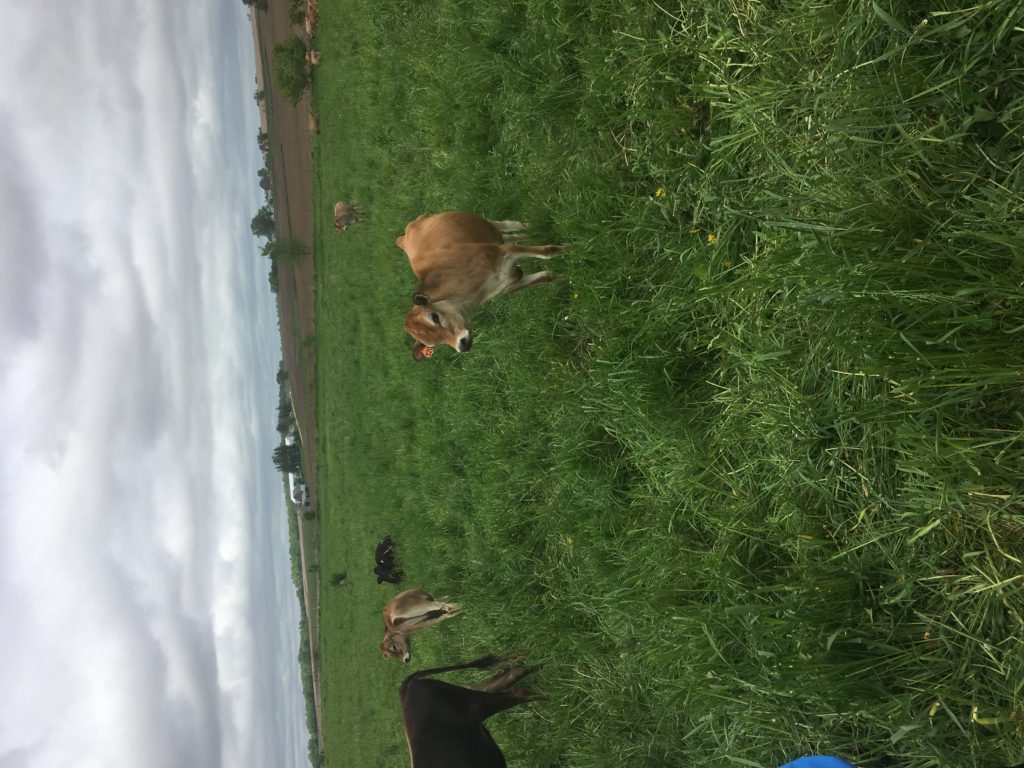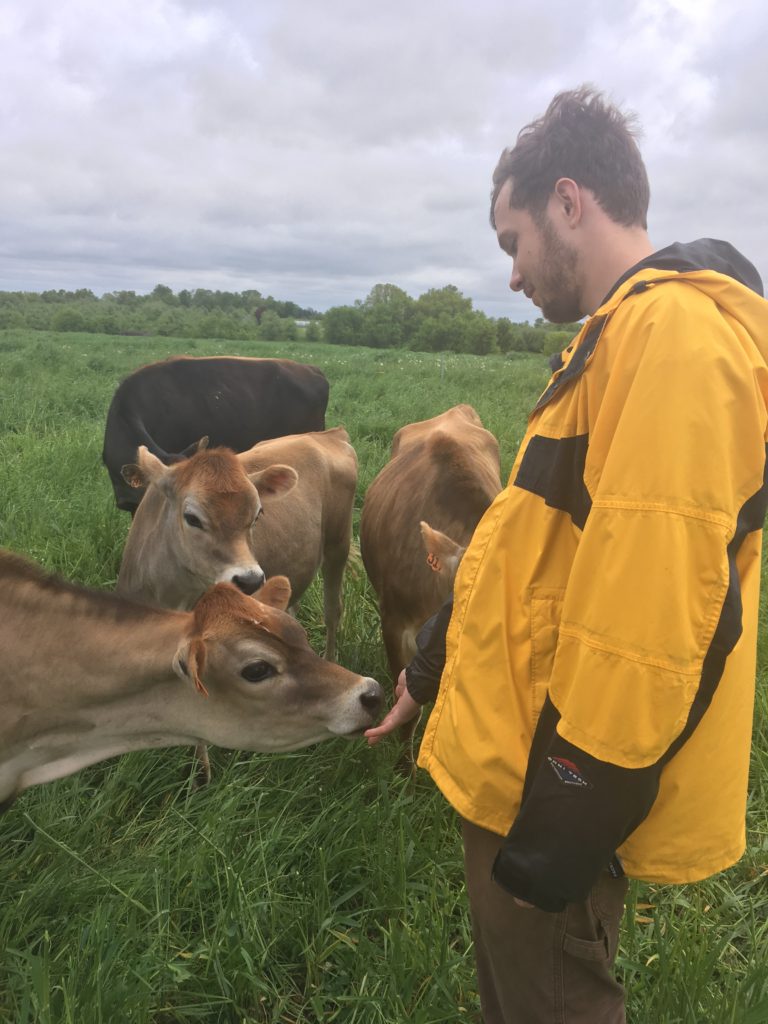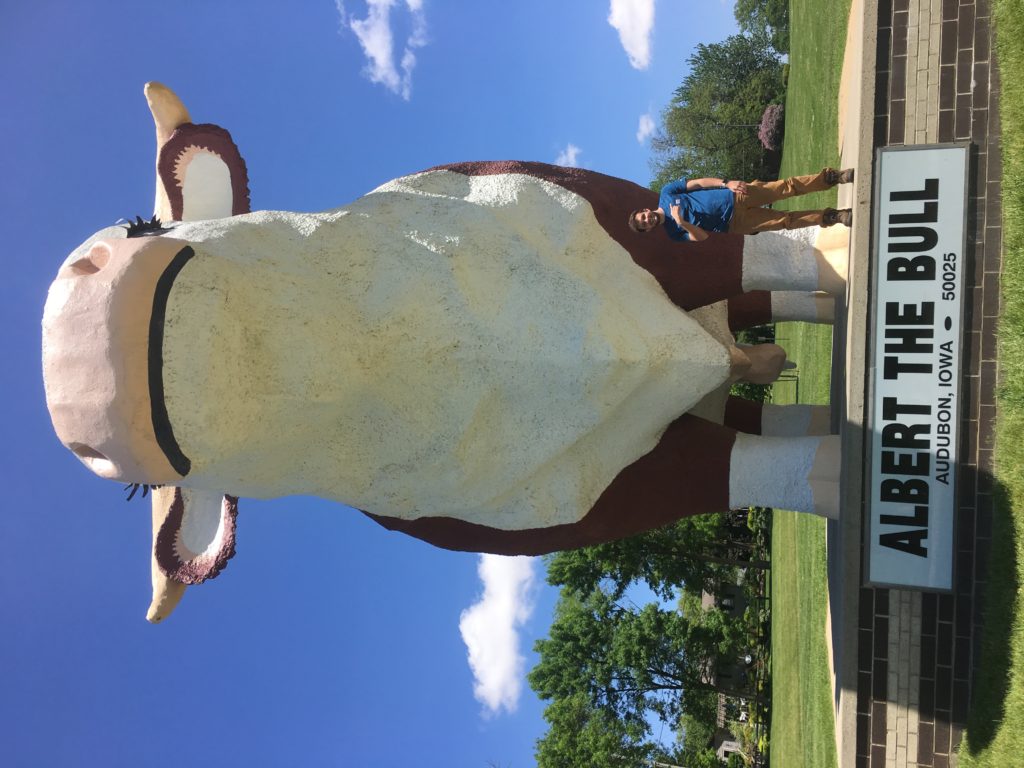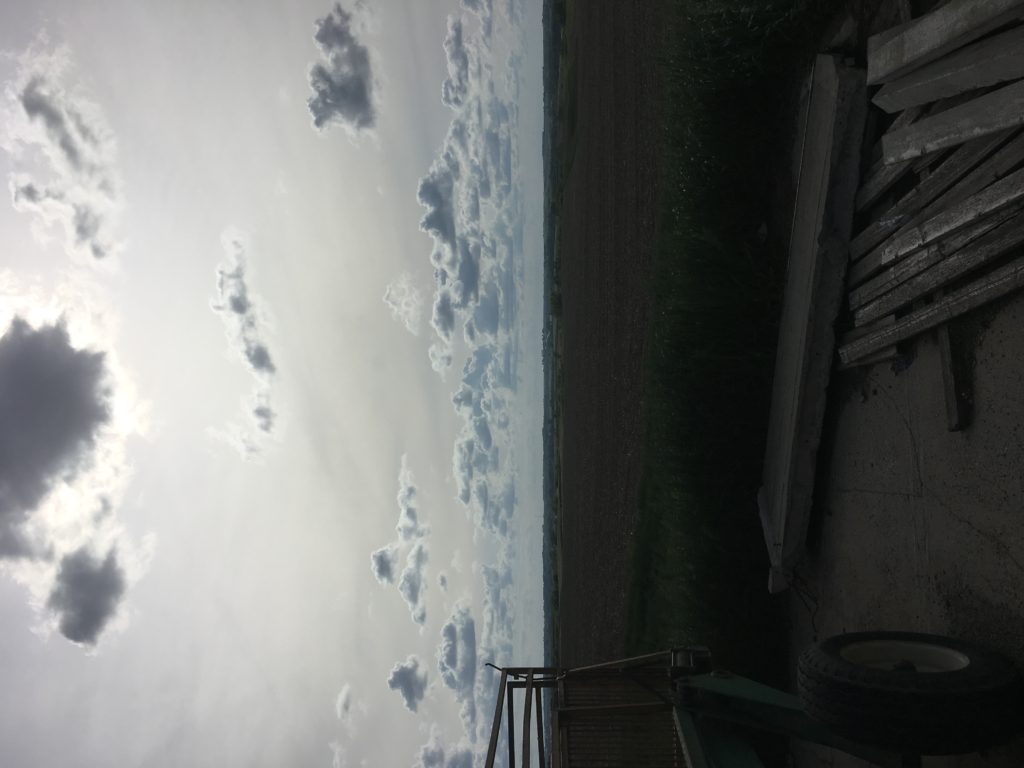I bet you didn’t know there were mountains in Iowa. It’s okay, me either. And I guess mountains probably aren’t the best description. They’re more like really big hills. On the Northeast side of the State there are huge rock formations covered in forests. There not quite as expansive as Paris Mountain back in Greenville (there aren’t houses on these mountains), but they are still big enough to grab one’s attention and even take one’s breath away. I’ve been told that a long time ago when glaciers were moving everything around the one that gave Iowa it’s striking flat(ish) landscape completely missed the Northeast allowing the land the to maintain its forests and rocky formations.
I’ve found my time here in the Northeast full of beauty, familiarity, and cows. Even thought these were no “Happy Cows” they seem glad to be able to roam around in the many pastures.
We visited a few farmers who are members of a farming co-operative called Organic Valley. Organic Valley works together with farmers to help them to sell their product to a market solely for organic standard farms. Going around to these different farms I realized two important things.
The first being the love for farming that everyone shared.
We visited mostly dairy farmers and one farmer who had livestock for meat production. Everyone of them loved there animals, at least from what I could tell. They all wanted what was best for the animal and did a lot of hard work to make sure that the animals were provided for. A common practice that farmers did was “rotational grazing,” or at least some version of the practice. What rotational grazing consist of is giving the animal (in this case cows) new grass to eat by fencing off sections of the pasture and moving them from one ares to another. Farmers did this because it gave the cows new grass to eat over time. They also did to improve there soil health. Cows are actually pretty picky and like some grasses over others. With is grass that they don’t eat they just stop all over it putting the plant back into the ground. This puts organic material back into the soil making it richer. The cows also act as a lawn mover eating the tops of the grass, which in turn breaks off roots into soil, which is a food supply for the microbes that live in the soil allowing them to the thrive. It’s not only the cows that benefit but the Earth as well.
The second important characteristic I learned from the farmers is the sense of community between them. There were a couple of things that contributed to the sense of community. The first being the most obvious, they were all organic farmers. Having the same occupation and the similar practices helps create a strong connection between everyone we met. They were able to talk about their own operations and they differed or how they were similar. Another factor that contributed to the sense of community was being from the same area. Residents of the same location can share obstacles they all may face due to where they are physically located. This connection best revealed itself when we visited an Amish community and there farm. Even though the Amish were not apart of the organic co-op they were from the same area as the other farmers and they knew a lot of the same people. They could talk about neighboring farms and the owners and how they helped or contributed to their operation.
This community was super important to me, because it is a continuous theme that reveals itself everywhere. It also important because it shows intersections between organic foods and local foods. Organic food can be local but that does not mean they always co-exist and one thing that consumers should be more aware of is that the terms are not interchangeable. Don’t expect local food to be organic or vice versa.
Robert Paarleberg writes in his book, Food Politics, “Journalist, Michael Pollan, a leading voice in the local food movement, observes that when people shop at a farmers’ market they become less like consumers and more like neighbors.” Food is a strong indicator of whether or not a community is thriving or not. Food can be a sociological tool to help communities around the nation become stronger and find solutions for weaker communities to build themselves up.
“If more of us valued food and cheer and song above hoarded gold, it would be a merrier world.”
― J.R.R. Tolkien






